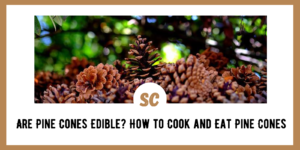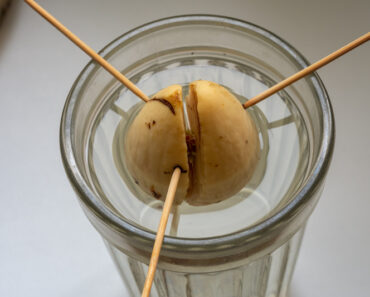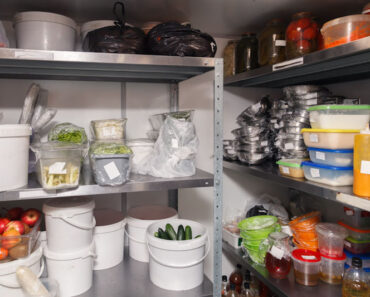In a survival situation, food becomes a priority rather quickly. Yes, we can survive for quite some time without it, but even going a short time without eating decreases energy levels and the ability to focus.
Luckily, there are all sorts of wild edibles to choose from. In fact, nature provides such an abundance of edibles that if you know what to look for, you can keep your stomach from growling.
A quick look around will tell you that trees are abundant, and many of them bear food items that people love to eat. One very recognizable kind of tree is the pine tree. And like a fruit tree dropping its fruits, pines trees can also drop something onto the forest floor.
Pine cones. However, a pine cone doesn’t look or smell like a fruit, which begs the question: Are pine cones edible?
Let’s explore that question by finding out:
- What a pine cone really is
- How to eat one
- Which other parts of a pine tree are edible
What Are Pine Cones?
While many coniferous trees produce cones, pine cones are only produced by, you guessed it, pine trees.
Pine cones are how a pine tree reproduces, and they can either be male or female pine cones. The male pine cones contain the pollen while the female cones contain the seeds, which can be thought of as a seed pod.
How To Identify Pine Cones
Cones from coniferous trees come in a lot of different sizes, shapes, and with their unique shapes covered in woody scales, they are pretty easy to identify.
Pine cones generally have a round base and only measure a few inches in length. They have smooth, woody scales without sharp edges or spikes on the scales like some cones do. Also, the male cones are generally smaller than the female cones.
Trees That Have Pine Cones
There are over 500 types of conifers worldwide, but only about 120 of them fall into the pine tree category. Several examples of pine trees include:
- Sugar Pine
- White Pines, like the Western White Pine or the Eastern White Pine Trees
- Norfolk Island Pine Tree
- Lodgepole Pine Trees
- Ponderosa Pine
- Red Pine Trees
- Jack Pine Trees
- Pitch Pine Trees
- Jeffrey Pine Trees
- Yew Trees are not true pine trees, but they do look similar
Are Pine Cones Safe for Human Consumption?
The short answer is yes, pine cones are safe for human consumption. But, the seeds inside pine cones are also edible, tastier, and safe for human consumption as well. Due to its woody components, it’s probably best that the cone isn’t eaten raw.
How To Eat Pine Cones
Some methods for preparing a pine cone are to roast it over an open flame or to boil it. Boiling can help to soften the pine cone, but keep in mind that eating pine cones can be hard on the digestive system and can possibly cause a blockage in the digestive tract.
Another method for preparing pine cones is to make flour out of them. To prepare pine cones for this, they first must be thoroughly dried out. They can be roasted over an open flame or baked. This will also help to eliminate any insects inside. Once the cone is thoroughly dried out, it can be ground into a fine powder and used for a variety of recipes.
As mentioned earlier, pine cones also have seeds hidden under a hard outer shell. The shell is covered in woody spines that help to keep the seeds safe until they are ready to be released.
Nutritional Value of Pine Cones and Pine Nuts
Pine cones are a good source of fiber and vitamin C. They may also help to promote the immune system, but remember that they can be hard on the digestive tract.
Pine nuts are packed with magnesium, iron, antioxidants, zinc, and protein but the seeds contain calcium, phosphorus, dietary fiber, vitamin K, vitamin E, calcium, and manganese.
What do Pine Nuts Taste Like?
Pine seeds (pine nuts) can taste different from one pine species to the next. However, they are generally described as having a nutty flavor and a buttery taste with a texture that is smooth. They have been compared to eating cashews.
Pine Nut Syndrome
Interestingly, eating pine nuts can result in what is called “pine nut syndrome” or “pine mouth.” It’s reported from people that experience this, that a metallic taste, or bitterness lingers in their mouth.
It’s not completely understood why this happens, and there aren’t any long lasting effects, but the taste can linger from a few days to a few weeks.
Can Other Parts of Pine Trees Be Eaten?
You don’t have to stick to just eating the cone or pine nuts. There are other parts of a pine tree that are not only edible, but nutritious.
Pine Needles
Pine needles are edible, but certain pine trees may taste better than others. If you don’t care for the taste of raw needles, try making pine needle tea out of them.
To make it, gather up some pine needles and toss them into a pot of boiling water. Allow the needles to steep for a bit before drinking. Making tea out of pine tree needles is that easy.
This is a popular preparation method among many people and in cold regions, a hot cup of tea will help to warm you up! Additionally, pine needles have vitamin A and are packed with vitamin C.
Pine bark
Eating tree bark may sound a bit odd, but it has been a source of survival food for a long time, and it contains a high level of starch and dietary fiber. You don’t want to eat the outer bark, what you want is the inner bark.
To get to the inner layer, use a cutting tool to cut a small section of the outer layer away. This will reveal a very light, whiteish, colored layer and this is what you want. Use a cutting edge to create scrapings that you can collect.
The inner bark can be eaten raw, roasted over an open flame, or boiled. Unless you have no other choice, limit how much of this is consumed as it too can be hard on the digestive system.
Additionally, it’s best practice to limit how much damage is caused to a living tree. To reduce the amount of harm to a tree, don’t harvest all the bark from the same tree. Instead, cut small patches from several trees.
Interesting Pine Cone Facts
Most people are probably used to pine cones that are relatively small, maybe several inches long, and lightweight. But pine cones can get much bigger. How big can pine cones grow?
The heaviest pine cones in the world are produced by Coulter pines, which are native to southern California in the United States. Pine cones from this tree can weigh up to 11 pounds! It’s no wonder that these pine cones are labeled as “widow makers,” and it’s recommend to wear hardhats when spending time in this kind of pine forest.
While the Coulter has the heaviest cones, the tree that produces the longest pine cones goes to the Sugar Pine. Sugar pine cones regularly measure over one foot, and in 2002, a record was set by Steve Schwarz of Cuyhoga Falls, Ohio. He measured a cone that was 22.9 inches long!
Other Interesting Uses For Pine Cones
Arguably, the seeds are the best and easiest part of the cone to eat, so its understandable that you may not want or need to eat the cone itself. But is the cone useful for anything else, or should you just toss it off to the side?
Cones can burn quite well, so keep a pile of them as an easy way to feed your fire or get it started.
Since pine cones float, one could be used as a fishing line float, which helps to set depth and as an indicator of a fish biting.
FAQs
Are pine nuts and pine cones poisonous?
No. It is safe to eat pine cones and their seeds (nuts), however some people may react differently to consuming them. If you are unsure how you will react to eating pine cones or pine nuts, start off by taking a small bite and waiting awhile to see if there is a reaction.
Can you eat green pine cones?
Yes you can, and ways to prepare green pine cones include boiling or baking.
Final Thoughts
Pine cones and their seeds are safe to consume. The seeds are more nutritious, easier to prepare, and definitely taste better. If your food supplies are starting to run low and there is an abundance of pine cones around, don’t overlook it as a survival food.
It may seem tedious to gather pine cones as a food source, but it’s a food source that doesn’t bite back, and is easy to collect.
Thanks for reading and stay prepared.




































